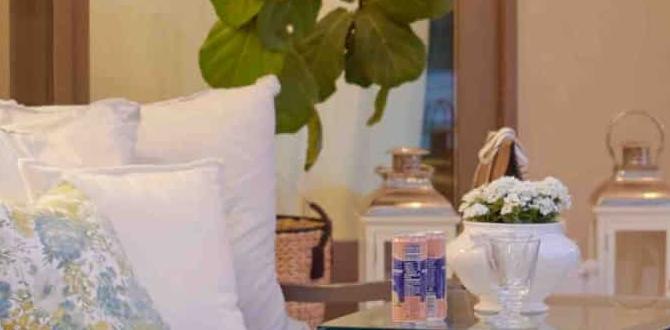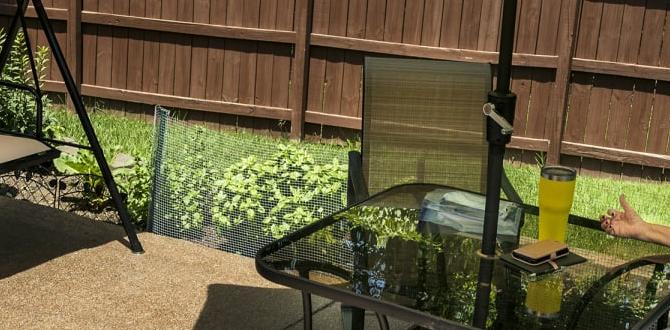Have you ever dreamed of growing your own flowers or vegetables? Container gardens for beginners can make that dream come true! You don’t need a big yard. Just a small balcony or even a sunny windowsill can work. Imagine enjoying fresh herbs for your favorite dish. Or picture colorful blooms brightening up your space.
Starting a container garden is easier than you think. Did you know that even little kids can help? It’s fun to watch plants grow and learn about nature. Plus, you can use old pots, buckets, or even recycled containers. This means you can garden while saving the planet!
In this article, we will explore the basics of container gardening. We’ll share simple tips to help you succeed. Soon, you’ll enjoy the rewards of your small garden. Are you ready to dig in?
Container Gardens For Beginners: A Simple Guide To Success
Container Gardens for Beginners
Container gardening offers a fun way to grow plants with limited space. You can turn a small balcony or patio into a green oasis. Beginners can start with easy-to-grow herbs like basil and parsley. Did you know that container gardens can even mix flowers and veggies? This not only beautifies your space but also makes gardening more enjoyable. With the right soil and sun, anyone can create a thriving container garden. Ready to dig in?Understanding Container Gardening
Definition and basics of container gardening. Benefits of container gardening for beginners.
Container gardening means growing plants in pots or other containers instead of in the ground. This is a great option for beginners. It allows anyone, even if they have small spaces, to enjoy gardening. The benefits of container gardens for beginners include:
- Easy to manage
- Less weeding required
- Freedom to choose location
- Control over soil quality
These features make container gardening fun and less stressful. You can use colorful pots to brighten any space!
What are the benefits of container gardening?
Container gardening is ideal for beginners. It is simpler and requires less space, which is perfect for homes with limited outdoor areas. Plus, it allows for greater creativity in choosing plant combinations!
Choosing the Right Containers
Types of containers: materials and sizes. Drainage considerations and importance.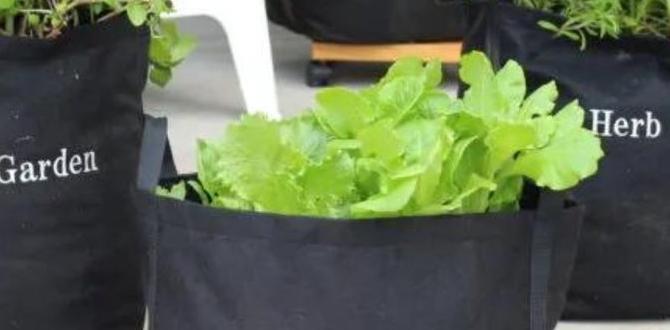
Selecting the right container for your plants is key to a happy garden. Different materials, like plastic, clay, or metal, each have their perks. Plastic is lightweight and comes in many sizes, while clay is breathable and looks great. Metal can be stylish but may overheat on sunny days. Remember, size matters! Choose containers big enough for roots to stretch.
Don’t forget about drainage! Plants need to breathe too! Without holes at the bottom, your plants might feel like they’re stuck in a swimming pool. A soggy root is a sad root! Always check for drainage and keep your plants dancing instead of drowning.
| Material | Advantages |
|---|---|
| Plastic | Lightweight, affordable |
| Clay | Good air circulation |
| Metal | Stylish, durable |
Selecting Suitable Plants
Best plants for beginners in container gardens. Factors to consider when selecting plants (climate, sunlight).Choosing the right plants can make your container garden shine like a diamond! Start with easy-to-grow plants like petunias, herbs, or succulents. These beauties love containers and don’t need much fuss. Remember, climate matters! If you live in a sunny place, sun-loving plants are your best friends. If it’s shady, look for plants that enjoy the dark. Check out the table below for some friendly options:
| Type of Plant | Sunlight Needs | Climate Type |
|---|---|---|
| Petunias | Full Sun | Warm |
| Basil | Full Sun | Warm |
| Ferns | Shade | Cool |
So, make sure to pick plants that fit your space and sun situation. Happy planting! Who knew gardening could be so fun and full of sunshine?
Soil and Fertilization Tips
Importance of choosing the right potting mix. Tips for fertilizing container plants effectively.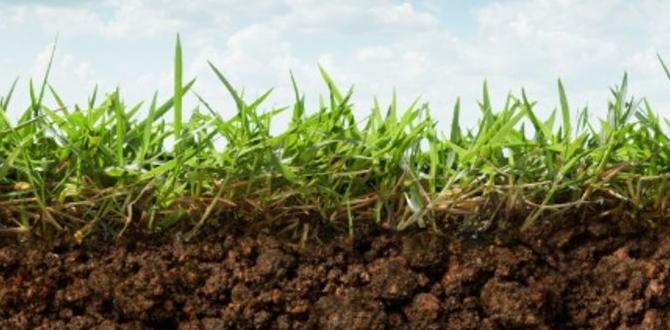
Choosing the right potting mix is crucial for your container garden. Good soil helps plants grow strong and healthy. It provides nutrients and supports root systems. Use a mix that retains moisture yet drains well. Also, fertilizing container plants is important. Regular feeding gives them the extra boost they need. Follow these tips:
- Use fertilizer every 4-6 weeks during the growing season.
- Choose a balanced fertilizer for best results.
- Dilute liquid fertilizers to avoid burning roots.
How often should you fertilize container plants?
Container plants need food, just like people! You should fertilize them every 4-6 weeks during spring and summer. This helps them bloom beautifully!
Watering Techniques
How often to water container plants. Signs of overwatering and underwatering.Watering container plants is essential for their health. You should check them every couple of days. On hot days, they may need water daily. Look for signs of trouble. If leaves turn yellow, that means they might be getting too much water. On the other hand, dry, crispy leaves may show they need more.
- Watering Too Much: Yellow leaves, soggy soil.
- Watering Too Little: Brown, dry edges, wilting.
Remember, the right amount of water leads to happy plants!
How often should I water my container plants?
Check container plants every few days. They may need watering more often in heat.
Signs of Overwatering and Underwatering
- Overwatering: Yellow leaves, fungus on soil.
- Underwatering: Dying leaves, very dry soil.
Designing Your Container Garden
Layout ideas for visual appeal. Mixing plants for color and texture.Creating a lovely container garden takes some thought. First, think about the layout. Place taller plants in the back and shorter ones in the front. This way, everyone can see each plant. Next, mix plants for an exciting look. Choose a mix of colors and textures. For example, pair smooth leaves with spiky ones. This makes your garden pop! Here are some ideas:
- Use bright flowers like marigolds.
- Include leafy greens like kale.
- Try herbs like basil for fragrance.
Combining different plants will make your garden beautiful and interesting!
What plants look good together in a container garden?
Some great combinations include petunias and sweet potato vines for color, or herbs with flowers for a fragrant touch. Mixing these plants adds life and joy to your garden!
Pest and Disease Management
Common pests and diseases in container gardening. Organic and chemical control methods.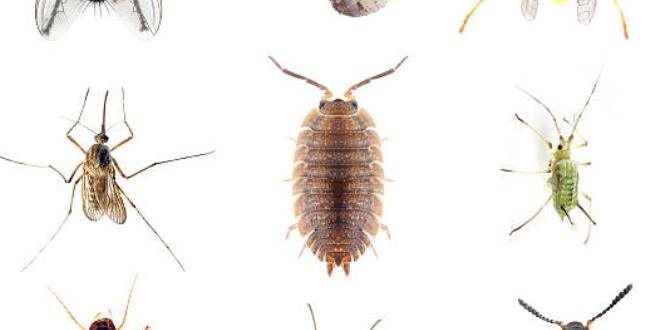
Pests can sneak into your container garden like uninvited guests at a party. Common critters include aphids, snails, and spider mites. They love to munch on your plants! Diseases like powdery mildew can also crash the party, making your plants look like they’re having a bad hair day.
For pest control, try organic methods like neem oil or insecticidal soap. They’re like a gentle hug for your plants. If things get wild, chemical sprays can help, but be careful—too much can spoil the fun!
| Pest/Disease | Organic Control | Chemical Control |
|---|---|---|
| Aphids | Neem oil | Insecticide |
| Snails | Hand-picking | Slug bait |
| Powdery Mildew | Fungicide soap | Fungicide |
Keep an eye on your containers and act quickly if problems arise. Your plants will thank you with a big, leafy smile!
Seasonal Care for Container Gardens
Adjusting care for different seasons. Tips for winterizing container gardens.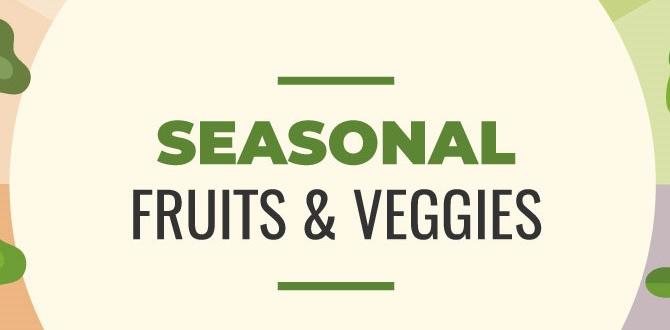
Seasonal care is key for happy container gardens. In the spring, check for frost and water regularly. Summer needs lots of watering, as containers dry out faster. In fall, remove dead plants and prepare for winter. Protect your plants to survive the cold. Here are some tips for winterizing:
- Move pots close to walls for warmth.
- Wrap pots in burlap or foam for insulation.
- Bring tender plants indoors.
- Use mulch to keep roots warm.
Adjust your care habits as the seasons change. This helps your garden thrive!
How can I protect my container garden in winter?
To protect your container garden in winter, move pots to sheltered spots, wrap them for warmth, and bring sensitive plants inside.
Resources for Further Learning
Recommended books and online resources. Local gardening clubs and community resources.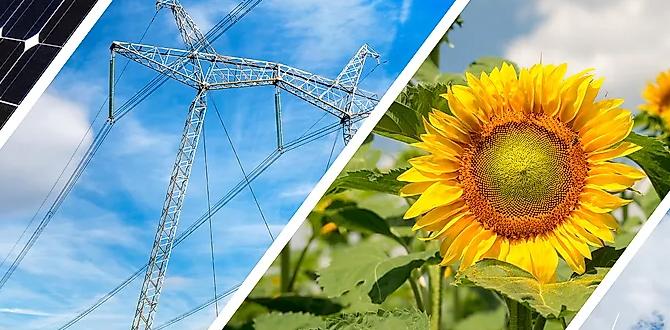
Learning more about container gardens is fun and easy! Here are some great resources to help you. Books like “Container Gardening for Dummies” and “The Vegetable Gardener’s Container Bible” offer simple tips and tricks. Online, you can visit sites like Gardener’s Supply and The National Gardening Association. Local gardening clubs can connect you with other gardeners. Look for community workshops to learn hands-on skills. All these resources can make gardening enjoyable and successful!
What are some good books for container gardening?
Books such as “Container Gardening for Dummies” and “The Vegetable Gardener’s Container Bible” are great to start with. They provide easy steps and ideas that help beginners thrive.
Conclusion
Container gardens are a great way to start gardening. They are easy to manage and save space. You can grow flowers, vegetables, or herbs. Choosing the right containers and plants is key. Remember to water regularly and provide sunlight. If you’re ready, gather your supplies and start planting today! For more tips, check out beginner gardening guides online.FAQs
What Types Of Plants Are Best Suited For Container Gardening, Especially For Beginners?For container gardening, it’s great to start with easy plants. Herbs like basil, mint, and parsley grow well in pots. Flowers like marigolds and petunias are colorful and simple to care for. You can also try vegetables like cherry tomatoes or lettuce. These plants don’t need a lot of space and are fun to grow!
How Do I Choose The Right Containers For My Garden, And What Materials Are Best?To choose the right containers for your garden, think about the plants you want to grow. If you have big plants, like tomatoes, use bigger containers. For smaller plants, like herbs, you can use smaller pots. Good materials for containers are plastic, wood, or clay. Make sure your containers have holes for water to drain out!
What Soil Mix Should I Use For Container Gardens To Ensure Healthy Plant Growth?For container gardens, you should use a mix of three parts: potting soil, compost, and perlite. Potting soil gives plants a good base. Compost adds nutrients, which help plants grow. Perlite helps with drainage, so roots don’t get too wet. This mix keeps your plants happy and healthy!
How Often Should I Water Container Plants, And Are There Any Tips For Proper Drainage?You should water container plants when the soil feels dry about an inch down. This could be every few days or weekly, depending on the weather. To help with drainage, make sure your container has holes at the bottom. You can also add rocks or small stones at the bottom before adding soil. This helps water flow out and keeps your plants healthy.
What Are Some Common Pests Or Diseases That Affect Container Plants, And How Can I Prevent Them?Common pests that harm container plants are aphids and spider mites. These tiny bugs suck juice from the plants, making them weak. Diseases like root rot can happen if the soil is too wet. To prevent these problems, check your plants regularly. Keep the soil just right, and wash your plants with water to keep pests away.

